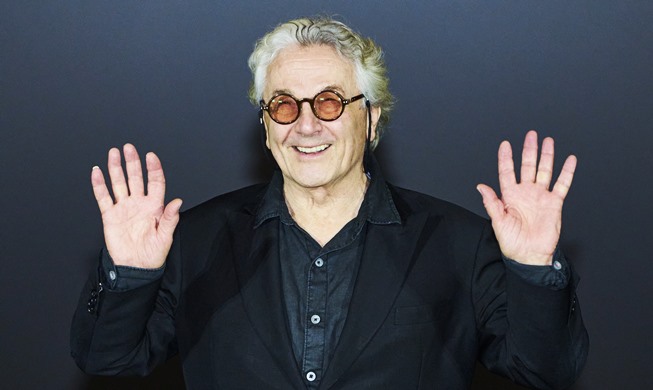-
 Korea.net's 24-hour YouTube channel
Korea.net's 24-hour YouTube channel- NEWS FOCUS
- ABOUT KOREA
- EVENTS
- RESOURCES
- GOVERNMENT
- ABOUT US
By Lee Dasom and Choi Jinwoo
Photos = Choi Jinwoo
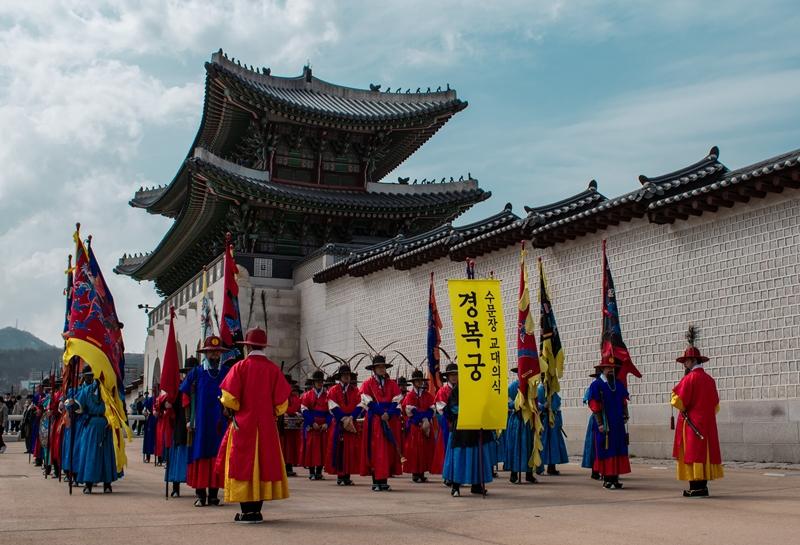
The Gyeongbokgung Palace Sumunjang Patrol Ceremony began at the woldae (elevated ceremonial stage) of Gwanghwamun Gate in Seoul's Jongno-gu District with around 60 military personnel from the Joseon Dynasty: royal guards; sumunjang (chief gatekeeper); jongsagwan, who assists the sumunjang and manages the list of entrants; and gapsa, elite soldiers who were traditionally selected through testing. Back then, sulla referred to a patrol system guarding the palace and city walls at night to prevent thieves from entering and to patrol for fire.
A group dressed in Joseon military attire marched out of Gwanghwamun in formation. As they passed, tourists stopped to see where the group was heading.
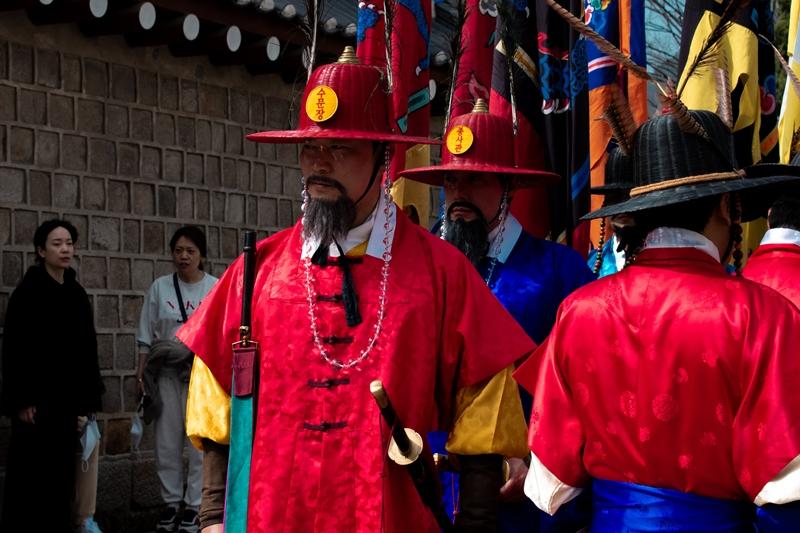
Once the soldiers were in formation, the traditional military band chwitadae band banged a drum to announce the beginning of the ceremony. To the beat of the drum, they hoisted their weapons high and marched in unison. The soldiers left the woldae and followed the lead of the sumunjang at the head of the formation, heading toward Seoul's Insa-dong neighborhood.
The sumunjang was in charge of protecting the capital and palaces including places like the gates of Gwanghwamun and Heunginjimun. A jongsagwan was a public official who assisted the sumunjang and handled the administrative duties of the government office.
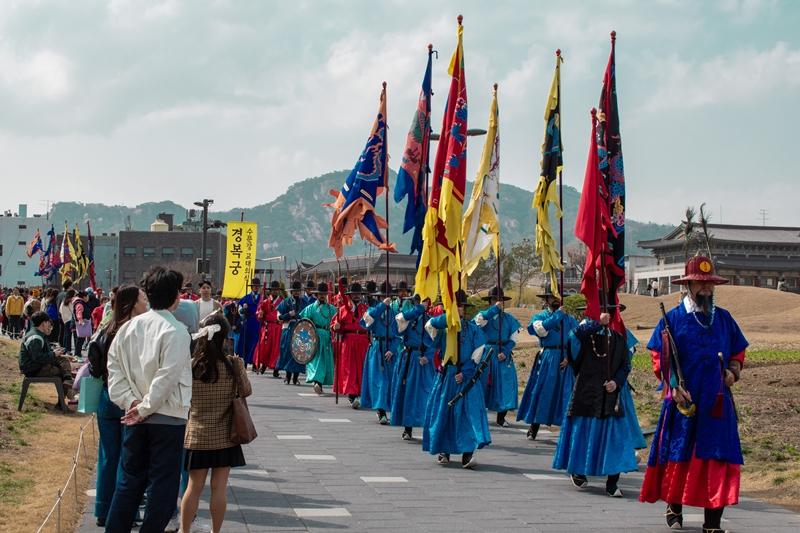
As the march entered Open Songhyeon Green Plaza, the chwitadae played a lively rendition of the folk song "Arirang" using traditional wind and percussion instruments from the Joseon period like the nabal (traditional brass horn), taepyeongso (double-reed wind instrument) and yonggo (barrel drum). Listening to the melody of such instruments felt like going back in time to that era. Tourists who followed the march hurriedly took out their smartphones to snap photos and videos and capture the spectacle.
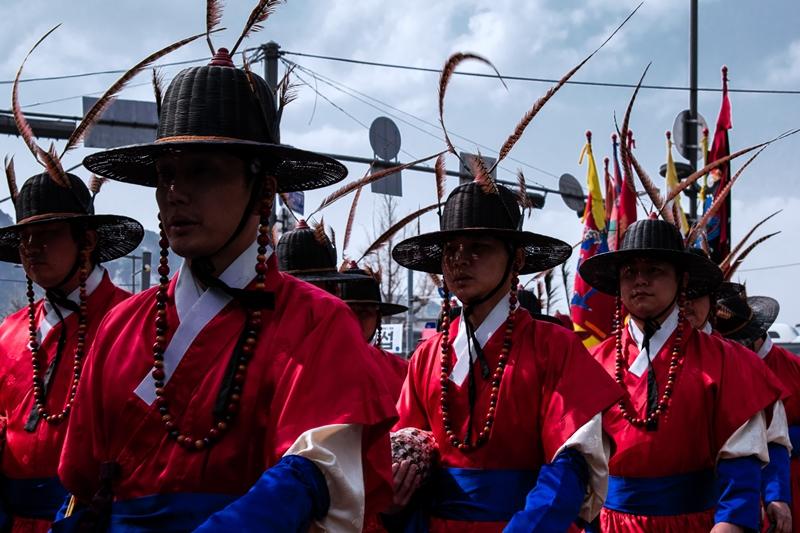
The traffic light at the crosswalk turned red, causing the march to stop. This allowed tourists to approach and see the chwitadae and royal guards, who were wearing elaborate headpieces and colorful attire. The atmosphere emanating from the soldiers' attire and expressions took over central Seoul.
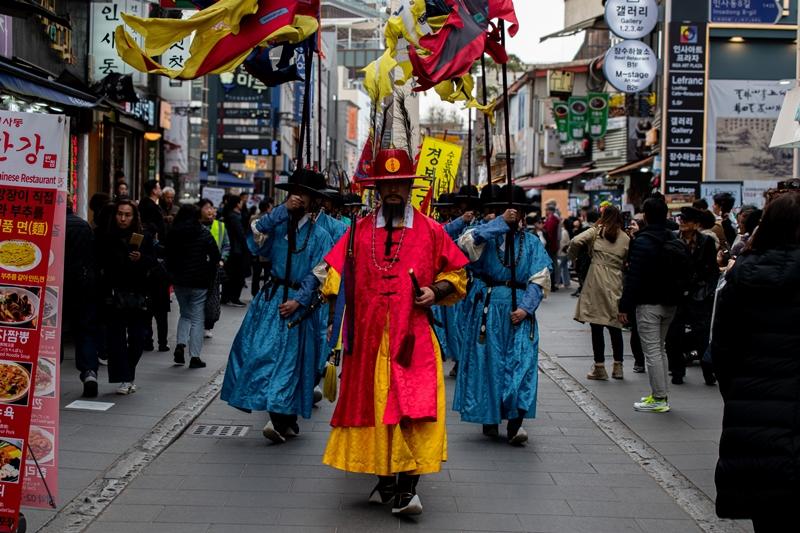
Finally, the march arrived on Ssamzigil Street of Insa-dong, the starting point of the sumunjang's march. As the drums sounded, tourists stepped aside. Amid the constant sound of camera shutters, foreign visitors shopping paused to look with curious eyes.
At the forefront and fluttering proudly ahead of the procession led by a flag representing the patrol unit and another indicating the soldiers' march, overwhelming the scene with their imposing presence.
German tourist Laura said she was in Insa-dong to eat Korean food but after seeing the march, it was like stepping into a scene of a historical drama. In a word, she described it as "colorful."
Seeing people rushing to take photos was truly impressive and memorable, Canadian visitor Shahad Sahar said, adding that he hoped to eat traditional food from the Joseon era, not just experience the ceremony.
"Following the reopening of Gwanghwamun Square, we designated the woldae in front of Gwanghwamun Gate as the starting point of the march to promote the woldae's value," said Lee Tae-Haeng, general manager of the Royal Palace Project Team under the Korea Cultural Heritage Foundation.
"We wanted the sumunjang, who was normally seen only within the palace, to appear in the middle of Insa-dong to convey a sense of freshness and surprise to the public."
|
Information on Palace Royal Guard Patrol Ceremony #Through Dec. 29, the hourlong event is held on Saturdays, Sundays and public holidays from 3 p.m. to 4 p.m. |
Most popular
- First hearing-impaired K-pop act hopes for 'barrier-free world'
- 'Mad Max' director impressed by 'cinema-literate' Korean viewers
- Romanian presidential couple visits national cemetery
- President Yoon, Japan PM pledge better trilateral ties with US
- President, Romania pledge better defense, nuclear power ties




